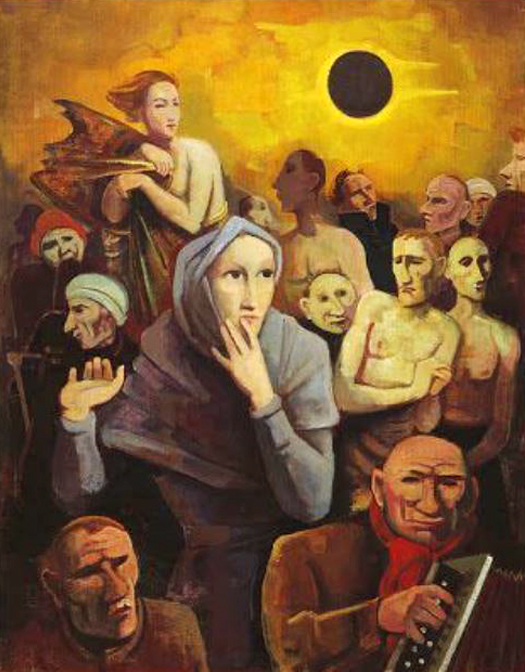Night of the Black Moon
Sometimes an artist’s efforts to endure an indifferent society seems an unbearable, uphill battle. When on occasion I’m feeling disheartened, I find solace by reading about what other artists have had to put up with in the course of their careers. Such reading usually provides me with enough consolation to shake off my negative mind-set and enthusiastically return to my painting.
One evening while hitting the books to elude a squall of dejection, I happened upon the reproduction of a painting I had never seen before. Titled, Night of the Black Moon, the mysterious work commanded my immediate attention, as it seemed a visual representation of everything I had recently been feeling. An unsettling image that matched my melancholia, Karl Hofer’s Night of the Black Moon nevertheless quite inexplicably gave me feelings of optimism.

Karl Hofer (1878-1955) was a leading expressionist painter in Germany, but he was never affiliated with any of the expressionist groups or circles like Die Brücke (The Bridge), Der Blaue Reiter (The Blue Rider), or the Novembergruppe (November Group). In 1921 Hofer became an art professor at the Kunstschule in Berlin-Charlottenburg, but the growing fascist movement in the country considered expressionism to be “un-German.”
After the Nazis seized power they officially banned Hofer’s works and sacked him from his teaching position. Eventually Hofer’s paintings were included in the Nazi’s infamous 1937 Entartete Kunst (Degenerate Art) exhibit held in Munich. Incredibly the artist was never sent to a concentration camp or press-ganged into military service like so many of his contemporaries. Forbidden by the authorities to paint or exhibit, Hofer continued to reside in Berlin – living a shadow existence but somehow surviving.
One can only imagine Hofer in his Berlin studio painting Night of the Black Moon during the unhappy days of 1944. He created this masterwork surreptitiously under the most terrifying conditions. Berlin would finally be liberated in April of 1945 by the Soviet Red Army and Allied troops, but most of the city would be left in utter ruin. It is miraculous that Hofer survived it all.
After the war he would continue painting in his West Berlin studio until his passing in 1955 – and what a legacy he left for us. Luckily an excellent German language art book on the life and work of Karl Hofer is available on Amazon books.


